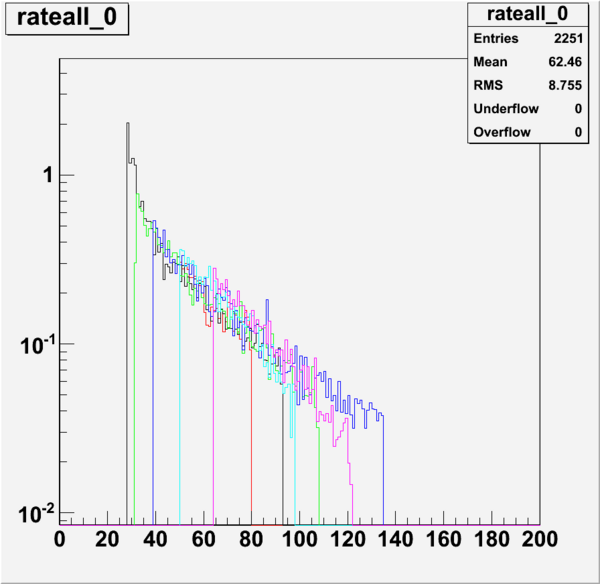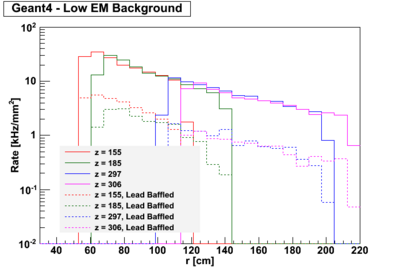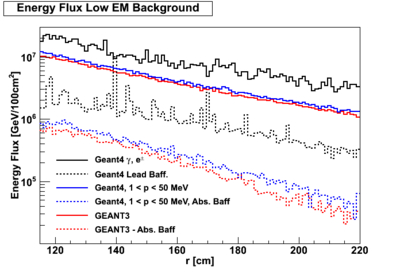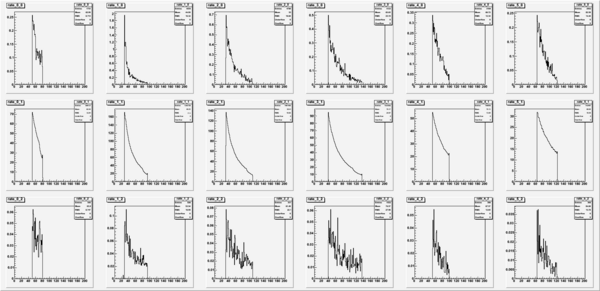Compare to geant3 result
Contents
PVDIS
A discussion of the PVDIS background rates and comparison by Seamus can be found here [1], [2]. The largest differences between the GEANT3 and Geant4 simulations is that GEANT3 does not track any particles less than 1 MeV (but adjusts energy depositions to account for this) and does not generate hadrons in interactions. We then look at Geant4 with appropriate restrictions to compare to GEANT3 and then remove these restrictions to get the "true" result. Additionally, different field maps were used in the GEANT3 and Geant4 versions; the Geant4 version typically had a ~10% weaker field integral.
Efficiency

|
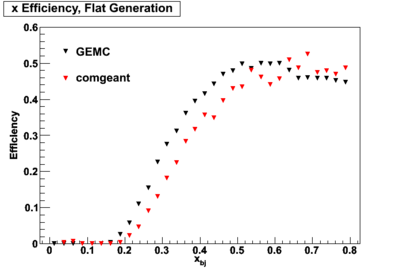
|
Efficiencies between these results and the proposal results are well reproduced for the momentum. For <math>x_{bj}</math>, the result is lower by about 20% relative to the proposal (possibly including some additional acceptance or trigger effects). The GEANT3 and Geant4 versions have similar shape, but are shifted relative to one another, reflecting the weaker Geant4 integral.
GEM Rates
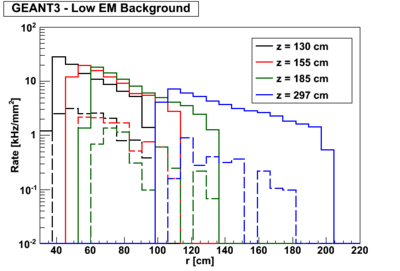
|
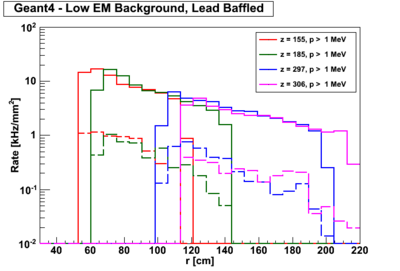
|
| Comgeant result | GEMC Results |
To get GEANT3 and Geant4 to agree, one must do a cut on the Geant4 result described above, but also allow for all energy depositions from particles that were created within the chamber itself. This the accounts for energy deposited by Compton electrons, etc. whereas Geant4 photons typically leave no energy. These were also generated using perfectly absorbing baffles. These were generally in agreement with the proposal predictions.
Removing all cuts gives the above and using lead baffles (which allow for potentially more background to be generated) gives our true expectation for rates above.
EM Flux
Similar consideration needs to be paid to the EM flux. To get Geant4 and GEANT3 to agree, Geant4 requires an additional cut of particles above 50 MeV, which are not generated in GEANT3. This mainly reduces a population of higher energy photons (which I suspect are from <math>\pi^0</math> decay). The baffled and unbaffled rates agree to within reason.
transversity
kinematics


background rate
simulate 1e9 of 11GeV e- hit on 10atm he3 with BaBar magenet
rate calculated by assuming 15uA current
column from left to right: gem plane 1 - 6
row from top to bottom: electron, photon, other particles
